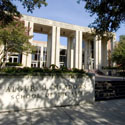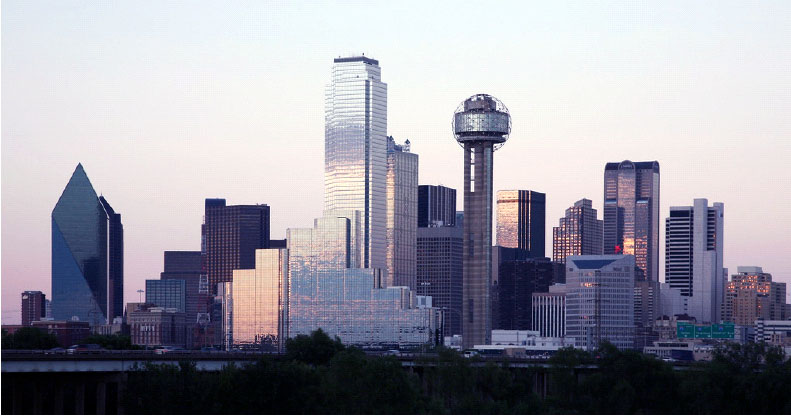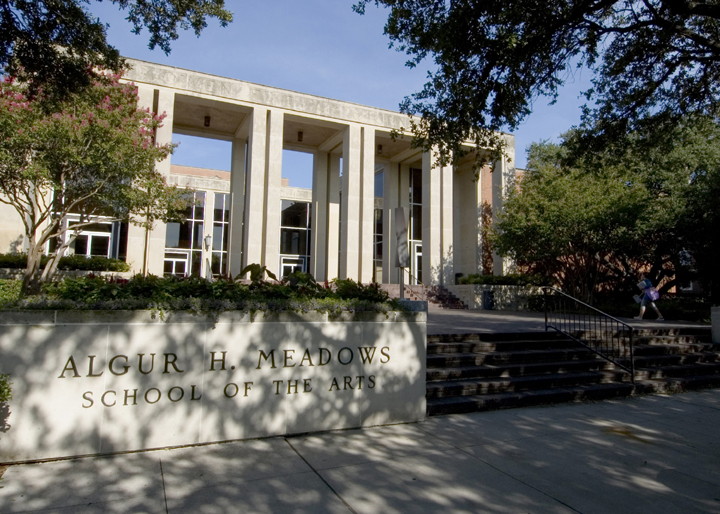Creative Time releases recommendations for fostering the arts in Dallas
Recommendations for fostering the arts in Dallas are announced by SMU’s Meadows School of the Arts and Creative Time.

A series of recommendations for fostering the arts in Dallas will be released today by SMU’s Meadows School of the Arts and Creative Time, a New York-based public arts organization. In October 2009 Creative Time received one of the inaugural two Meadows Prize artist residency awards from the Meadows School.
 Read the report. |
Creative Time’s residency has taken the form of a yearlong study of the Dallas art community to identify strengths and potential areas for growth. During the course of three weeklong visits to Dallas over the past year, Creative Time’s team met with a wide range of members of the art community, including artists, curators, collectors, gallery owners, visual and performing arts organization leaders, school administrators, philanthropists, writers, community organizers and city officials.
“Our goal was to begin an inclusive dialogue about where Dallas could focus energies to nurture its artistic life, a conversation that we hope will continue long after our residency has ended and will lead to new initiatives, policies and opportunities for artists,” said Creative Time President and Artistic Director Anne Pasternak.
The group identified 13 key elements necessary for the Dallas art community to thrive. Many are already in place and working effectively, while others are lacking or nonexistent, Pasternak said. For each element, Creative Time developed several recommendations to further strengthen programs and structures and to create new opportunities.
The 13 key elements are:
- A sustainable artist community and opportunities for live/work space
- Cultural institutions with international reach, innovative programs and historically relevant collections
- Great patrons who support the creation, presentation and acquisition of art
- Mid-sized and small art spaces that support the creation of new and experimental work by local and international artists
- Skilled and visionary arts leaders in institutions big and small
- Excellent contemporary art galleries with international reach
- Residency programs for national and international artists to create in Dallas
- Master of Fine Arts programs to train and attract artists
- Arts education in Dallas public schools
- Public art to engage broad audiences and activate public spaces
- Engaged audiences
- Experienced art writers featured daily in primary news media
- Civic championing of the arts through policies and urban planning

The 58 recommendations in the report provide ideas for both individual and collective action. For example, the report said:
- Artists could rent studio buildings together, purchase property collectively and get actively involved in the communities around their studios.
- Artists and arts organizations could explore opportunities to present work in unexpected and diverse sites throughout Dallas.
- Cultural institutions could commission new work and support artistic experimentation, collaborate across disciplines and involve the local artist community by hosting professional development workshops and artist events.
- Institutions should hire skilled and visionary leaders, invest in the training and growth of their staffs, and provide respectful and competitive compensation packages to attract and retain the best in the field.
- Patrons could be encouraged to support small and medium-sized organizations, which are the stepping stones between the studio and the museum, as well as opportunities for local artists to advance their work through travel grants and residencies.
- Galleries could collaborate with each other as well as with universities, alternative spaces and cultural institutions through events such as book launches, film screenings and museum member tours.
- MFA programs could expand their course offerings and connect with the larger art community by requiring students to attend shows and openings off campus, visit local artists’ studios, attend lectures at museums and galleries and intern at local institutions.
- Newspapers, universities and museums could expand the discourse on art by sharing resources, such as having arts journalists contribute essays to museum publications and university faculty write columns in newspapers and online magazines.
- City leaders could support temporary art projects, re-evaluate public art master plans and make sure public art commissions are professionally curated and maintained. To begin to link fragmented populations, civic leaders should promote new ideas in urban planning, integrate art into all areas of policy and champion cultural production.
- Audiences should spread the word about exhibitions and events, advocate on behalf of the arts in schools and local governments, and support local institutions by becoming members or volunteering.
To read the full Creative Time report, click here (PDF).
A conversation about Creative Time’s study and the Dallas art community is now opened up to audiences online with D Magazine’s FrontRow. Creative Time encourages you to read the report, consider its recommendations, and post your reactions on the website. Visit frontrow.dmagazine.com/creativetime.

Bowen also noted that the Meadows School has already begun to act on the ideas in the report. “We’ve begun to create more opportunities for students to work in the community along the models that Creative Time has developed in other cities,” Bowen said. “We’ve also had overwhelming student interest in our new minor in arts entrepreneurship, the first program of its kind in the world.”
PUBLIC INVITED TO APRIL SYMPOSIUM
In a follow-up to the report, the Meadows School will host a public symposium on Saturday, April 9, from 10 a.m. to 3:30 p.m. titled “The Freedom of the City: Models of Urban Engagement and Creativity in the 21st Century.” The symposium will explore new models of public art practice in the urban environment. The aim of the event is threefold: to disseminate information on exemplary projects of this type that have taken place or are in progress in cities throughout the United States; to discuss the relevance of such approaches to the city of Dallas; and to generate public feedback on these and related issues deemed crucial to the well-being of the community.
Participants will include socially engaged artists such as Rick Lowe, creator of Houston’s Project Row Houses, and Tom Finkelpearl, executive director of the Queens Museum of Art, as well as members of Creative Time and prominent Dallas community builders. The symposium will take place in the Bob Hope Theatre of the Owen Arts Center. Admission is free, and no tickets are required. For more information, call the Meadows School Division of Art at 214-768-2489.
ABOUT CREATIVE TIME:
Since 1974, Creative Time has presented the most innovative art in the public realm. The New York-based nonprofit has worked with over 2,000 artists to produce more than 335 groundbreaking public art projects that have ignited the public’s imagination, explored ideas that shape society and engaged millions of people around the globe.
Creative Time seeks to convert the power of artists’ ideas into works that inspire social change and stimulate public dialogue on timely issues, while initiating a dynamic conversation among artists, sites and audiences. A vanguard presenter of public art in New York, Creative Time recently began presenting national and global projects and initiatives, making it the only public arts organization with programs that have reached from New York to New Orleans, Haiti to Hanoi, and Dubai to Denver. These projects further Creative Time’s belief in the importance of artists in society and the power of art to raise consciousness, expose injustices and imagine a better world.
For more information on Creative Time and its projects, visit www.creativetime.org.
ABOUT THE MEADOWS PRIZE:
The Meadows Prize replaced the Meadows Award, which was given annually from 1981 to 2003 to honor the accomplishments of an artist at the pinnacle of a distinguished career.
The Meadows Prize was established in October 2009 and is awarded each fall to up to two artists. Recipients are pioneering artists and scholars with an emerging international profile, active in a discipline represented by one of the academic units within the Meadows School: advertising, art, art history, arts entrepreneurship and arts management, communication studies, dance, film and media arts, journalism, music and theatre. The Prize includes support for a four-to-eight-week residency in Dallas, in addition to a $25,000 stipend. In return, recipients are expected to interact in a substantive way with Meadows students and collaborating arts organizations, and to leave a lasting legacy in Dallas, such as a work of art that remains in the community, a composition or piece of dramatic writing that would be performed locally, or a new way of teaching in a particular discipline.
The Meadows Prize is sponsored by the Meadows School and The Meadows Foundation, in partnership with the new AT&T Center for the Performing Arts and local Dallas arts organizations.
ABOUT THE MEADOWS PRIZE WINNERS, 2009 AND 2010:
In addition to Creative Time, the inaugural 2009 Meadows Prize was awarded to the Grammy-winning contemporary music ensemble eighth blackbird. The ensemble’s residency has taken place Oct. 17-23 and Nov. 15-19, 2010, and continues February 24-28 and March 27-30, 2011. (For information on their upcoming Dallas programs, click here) Its residency has focused on developing new curriculum that will help musicians become more entrepreneurial and engaged in their career plans. The curriculum is part of a new Meadows School initiative that includes the launch of the nation’s first minor in arts entrepreneurship.
The recipients of the second annual Meadows Prize, announced in December 2010, are playwright and performer Will Power and choreographer Shen Wei:
- Power’s work in Dallas will be a partnership between the Meadows School and the Dallas Theater Center; during his residency, Power will lead workshops for Meadows theatre students, for the DTC’s resident acting company and for local high school students. He also will write/develop a new theatre piece intended for production at the DTC.
- Shen Wei’s residency will take place over winter-spring 2012 and will include a new work choreographed for SMU dance students, to be presented at their 2012 Spring Dance Concert.
For more information on Will Power and Shen Wei, click here.
###